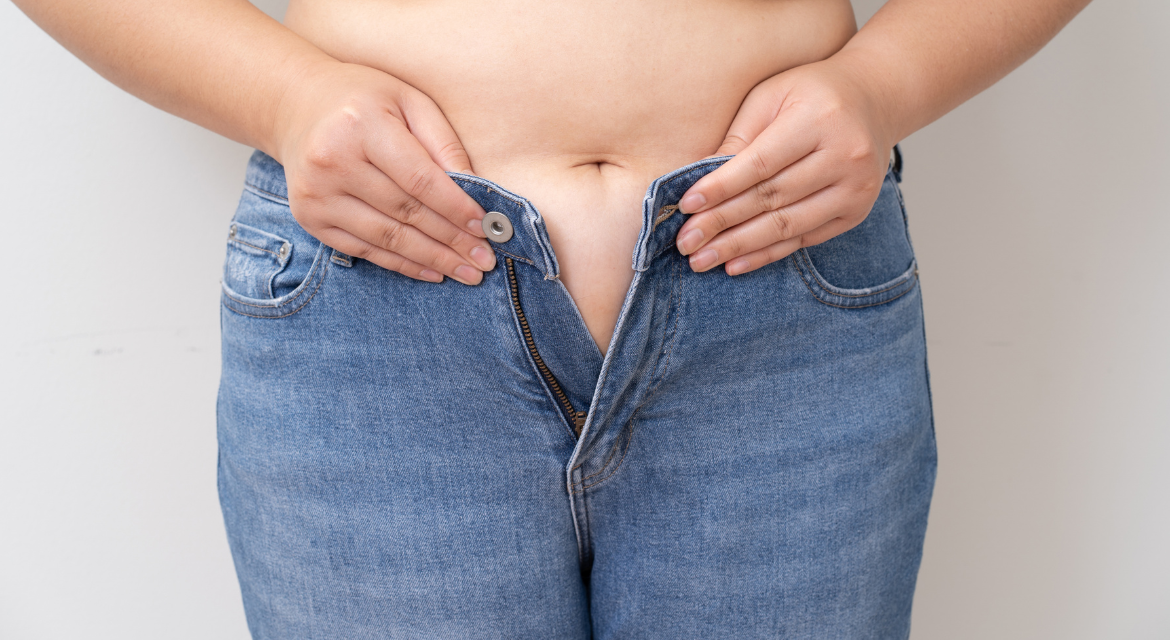
Sugar, we love it, but we know that too much is bad for us. Get ready because this article will not be sugarcoated due to the fact that not a single corner inside our body is left unaffected by sugar! Maybe I need to calm down now, but I didn’t write this to scare you. I just don’t want to hide the ugly facts and leave my midlife ladies clueless!
The fast food industry is one of the biggest culprits of all this sugar consumption. It’s estimated that Americans consume around 16 teaspoons of added sugar daily, which translates into more than 20 pounds yearly! Overeating sugar can lead to obesity, diabetes, kidney disease, and cancer—not to mention it makes you feel sluggish and tired. But did you know there’s another reason why women should avoid sugar? It could be affecting their hormones in midlife!
Sugar is everywhere.
Sugar is everywhere. It’s in your bread, pasta, cereal, and some medicines. Sugar is also hidden in many processed foods, including those that claim to be healthy or low fat. Even some of the most popular soft drinks contain large amounts of sugar. And don’t forget about desserts! While you may think they are already sweet enough, most desserts have added sugar and fruit juice concentrates (fruit juice contains fructose).
So it’s no wonder we need a serious dose of willpower to avoid all this excess sugar intake.
What makes sugar so addictive? The hard truth is that sugar is many times more addictive than cocaine. This is because women’s brains are wired to crave sweet foods.
Sugar is addictive. It’s also a toxin and a poison. As with any drug, you can become addicted to sugar in your brain and body. The good news is that once you eliminate sugar from your diet, it’s not hard to break the addiction because the withdrawal symptoms will come right along with it!
The bad news is that sugar is many times more addictive than cocaine. Your brain craves sweet foods because they were scarce during evolution–they were hard to find and most often found in fruits (which are high in fiber) which make them less palatable than other foods containing lots of calories from fat or protein but little or no fiber (like nuts).
Essential information about sugar addiction you must know! Sugar Addiction in Midlife: Is It Real?
Sugar addiction is real, and it affects more women than men. This is because women are more likely to be insulin resistant in midlife than at other times. Insulin resistance must be present for you to develop sugar dependence. So if you consume high amounts of sugar and carbohydrates, your body can create this hormone imbalance that makes you crave sweet foods even when there is no need for them. Sugar cravings are a common sign of insulin resistance, so if you find yourself constantly reaching for sweets, it may be time to examine your diet closely.
When blood glucose levels rise too high (too much sugar), the pancreas releases insulin into the bloodstream, which causes excess glucose from food to enter cells where it can be used as energy or stored as glycogen(an energy reserve). However, when an excess of glucose enters a cell at once due to overconsumption of carbohydrates or sugary treats, its storage capacity becomes full. Therefore, excess glucose will spill over into our bloodstream, causing blood pressure (hypertension) and increased risk factors such as heart disease and stroke. These common problems are associated with metabolic syndrome caused by obesity-related health issues such as diabetes mellitus type 2 diabetes mellitus.
Remember this: Every time you reach for a sweet fix, you’re only setting yourself up for a “sugar high.
Sugar is found in many foods and is terrible for your health. Sugar is addictive, and it leads to many diseases. Sugar can lead to diabetes, cardiovascular disease, and other problems if you overeat or eat it regularly over a long period of time.
Understanding how sugar works in the human body is essential, so you don’t make the mistake of thinking sugar is harmless!
Women in midlife are more susceptible to overeating sugary foods due to hormonal changes.
As you age, your body experiences many changes. Menopause is one of them. It happens when your body’s production of estrogen and progesterone decreases significantly, leading to hormonal fluctuations that may cause you to crave sweet foods more often. Sugar cravings are especially common during the first two years after menopause.
You may also notice that certain types of foods appeal differently during this time in your life:
- Starchier carbohydrates are more appealing than they used to be (e.g., potatoes)
- Sweeter-tasting fruits will most likely be enjoyed more now than before (e.g., mangoes)
Final thoughts
Remember this: Every time you reach for a sweet fix, you only set yourself up for a “sugar high.” Sugar is not just bad for your waistline—it’s also bad for your brain! And when we talk about sugar addiction in menopause, we’re talking about women at an increased risk of developing these types of problems as they age. But at the end of the day, it is all about BALANCE. It is your wedding anniversary, and you go out to eat and get your favorite dessert. If it makes you happy, just do it! Just create healthier habits to make you aware of how much sugar you consume and try to restrict it as much as possible to stay healthy. I need you, sisters!
So if you want more information on how to kick the sugar habit once and for all, sign up for my newsletter, and I will send it to you!
I would love to hear your thoughts, so feel free to add your comments below.
Sisters support sisters. Let’s support each other. Use the share buttons in this article so more women can get help and feel great! XOX Mary


